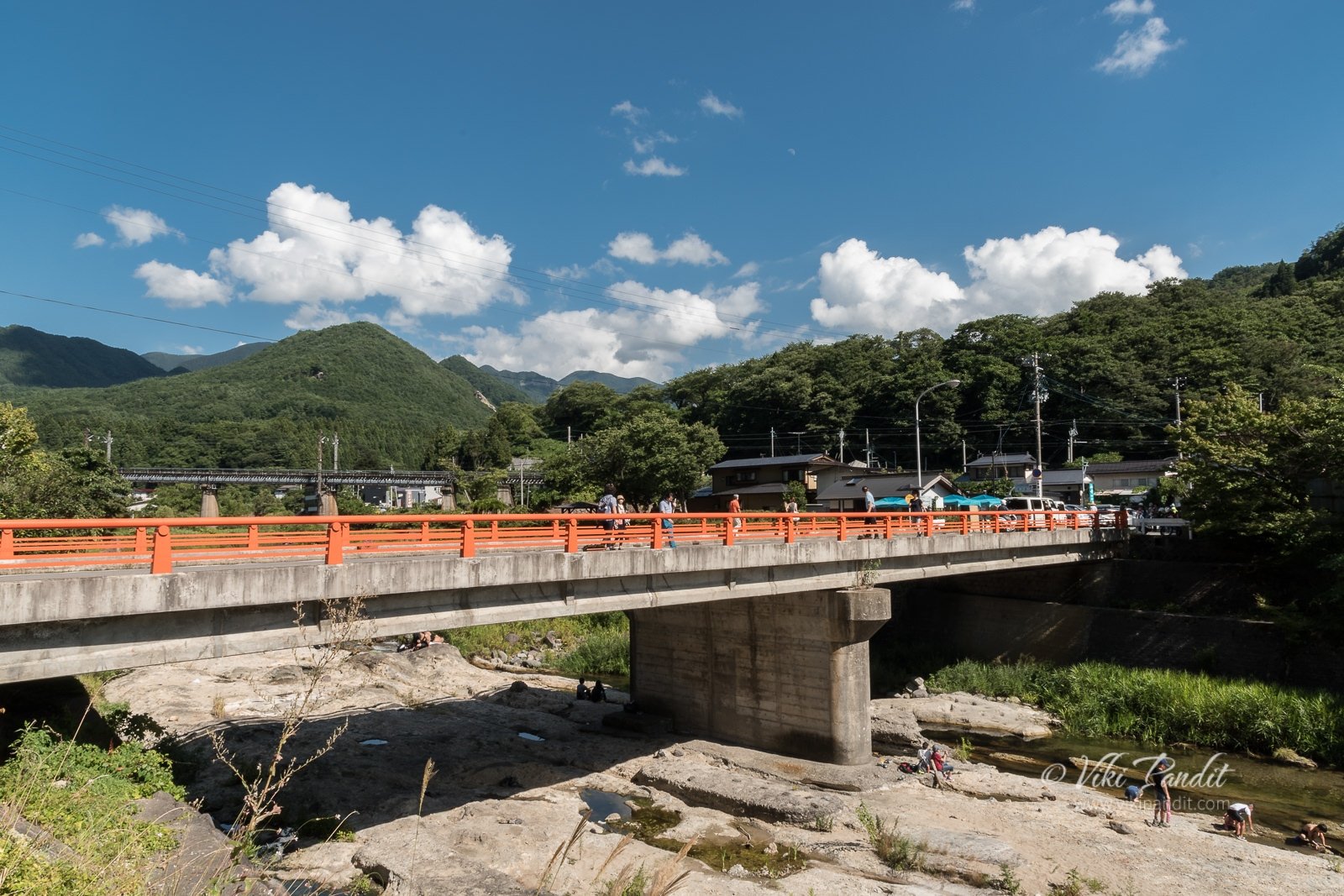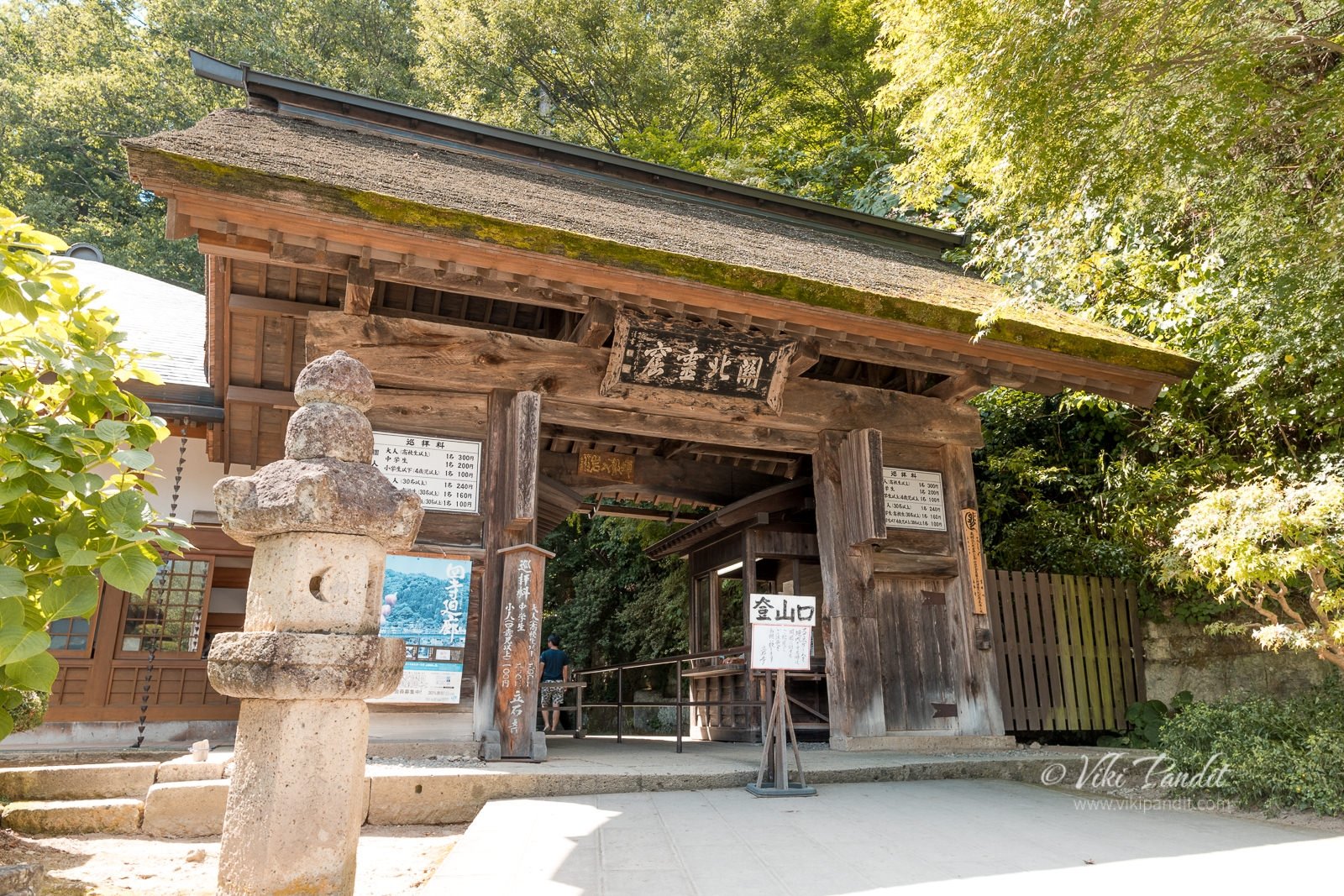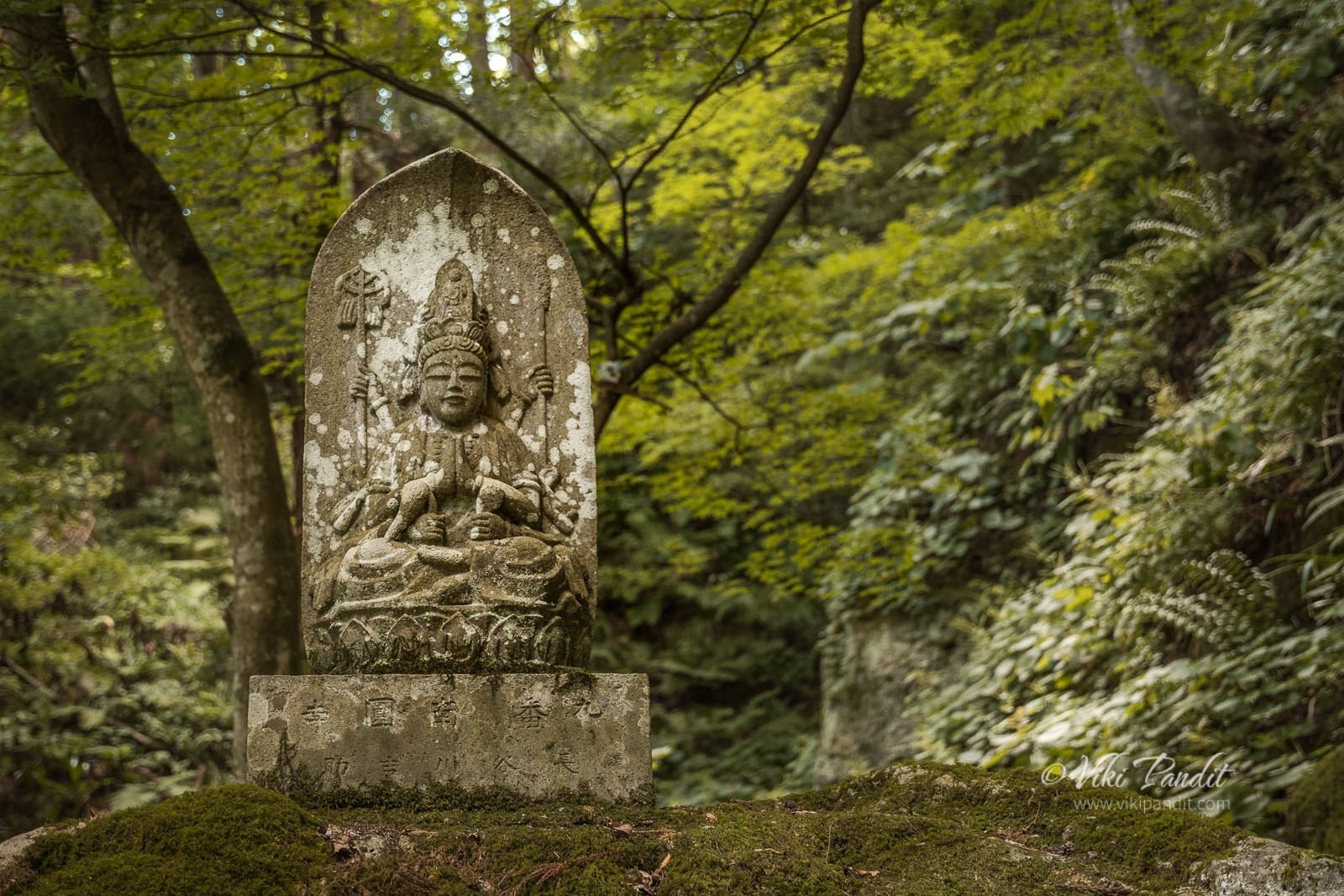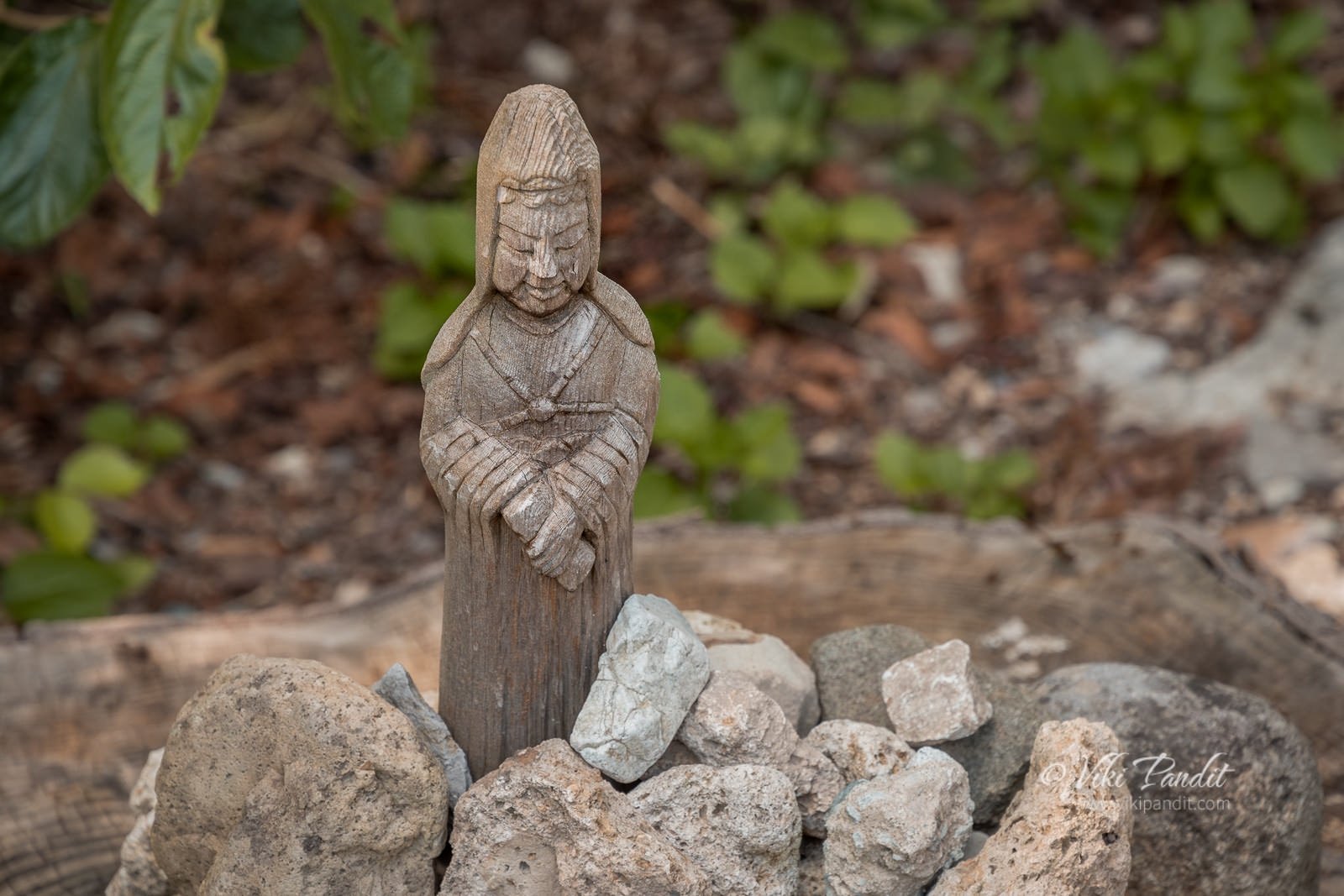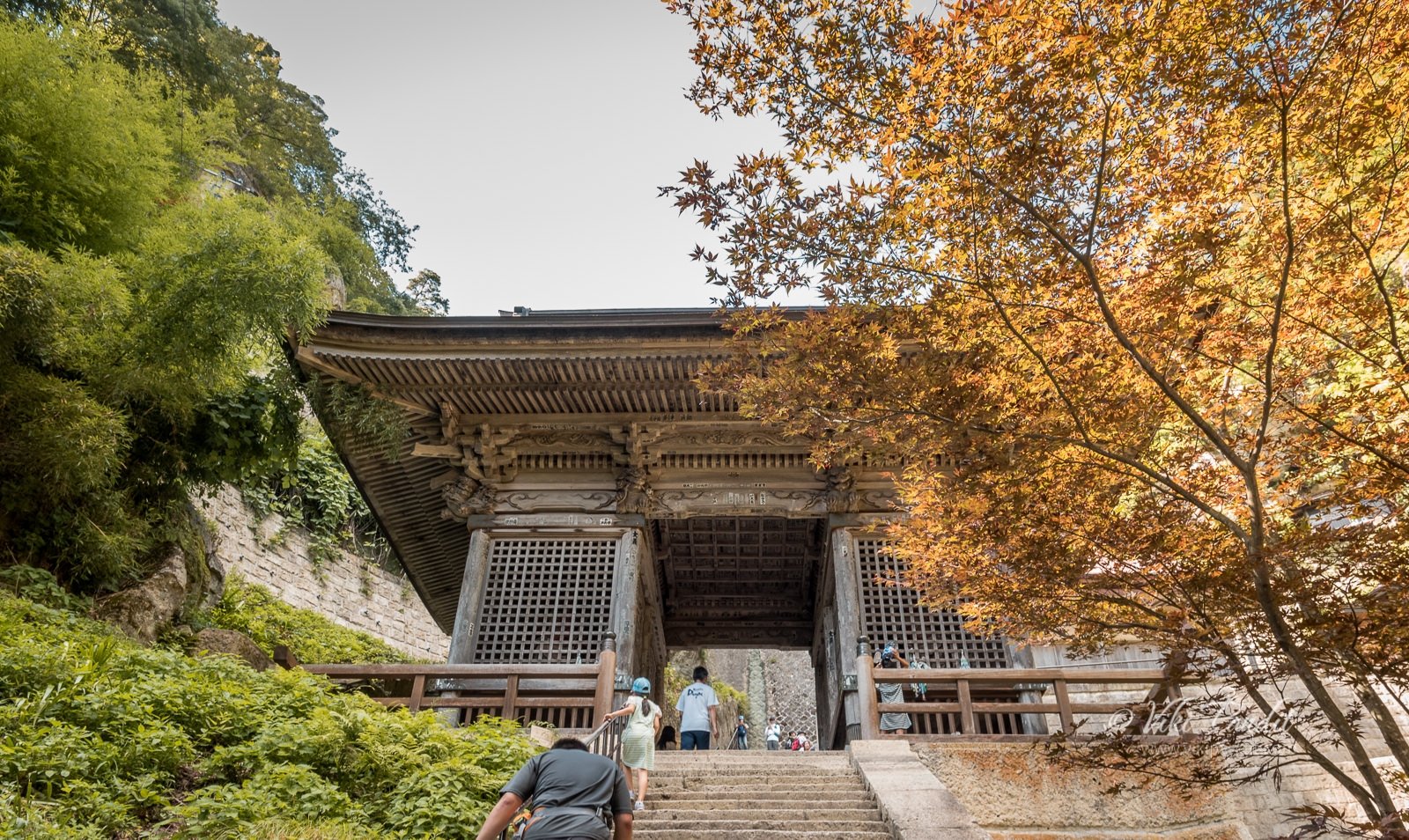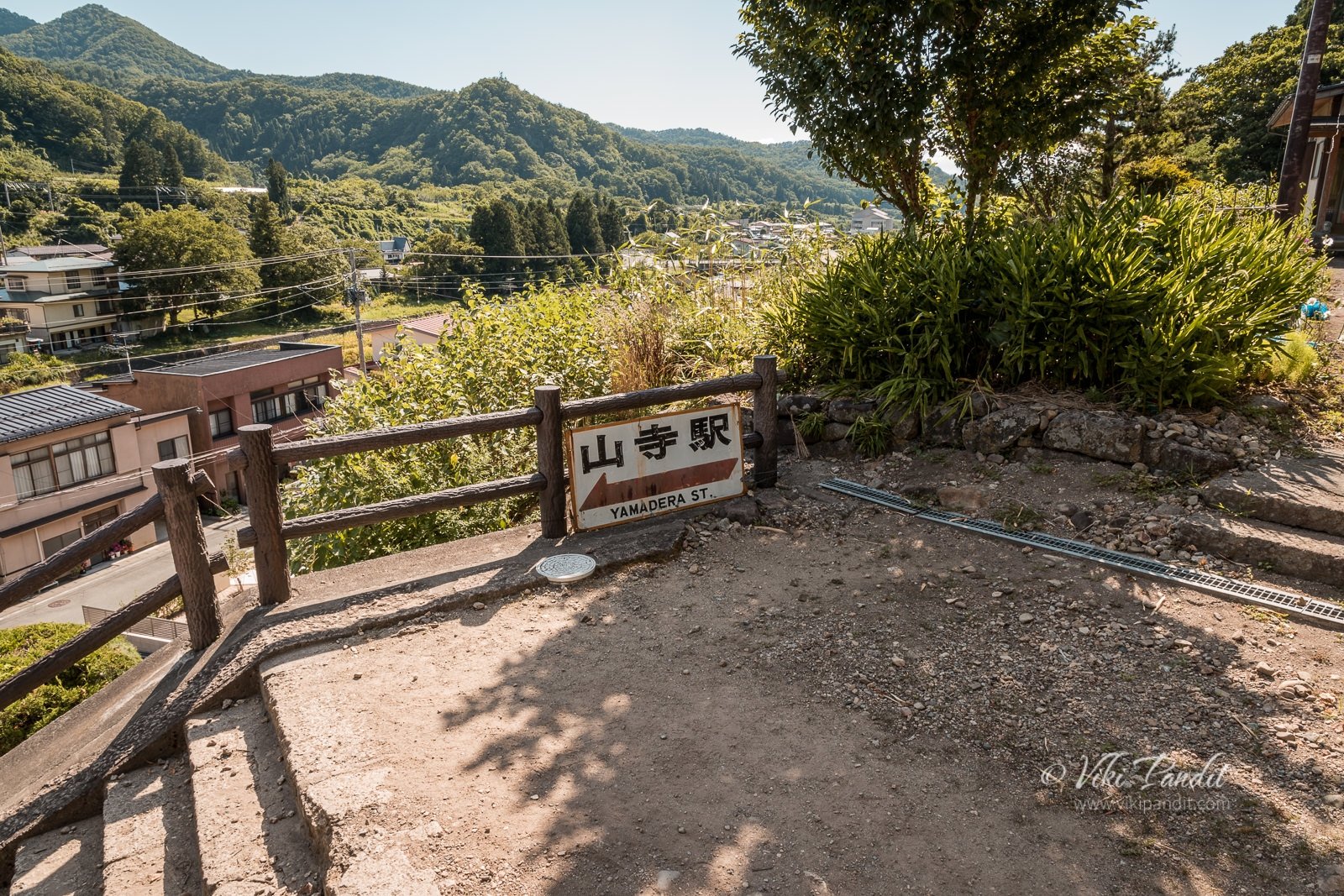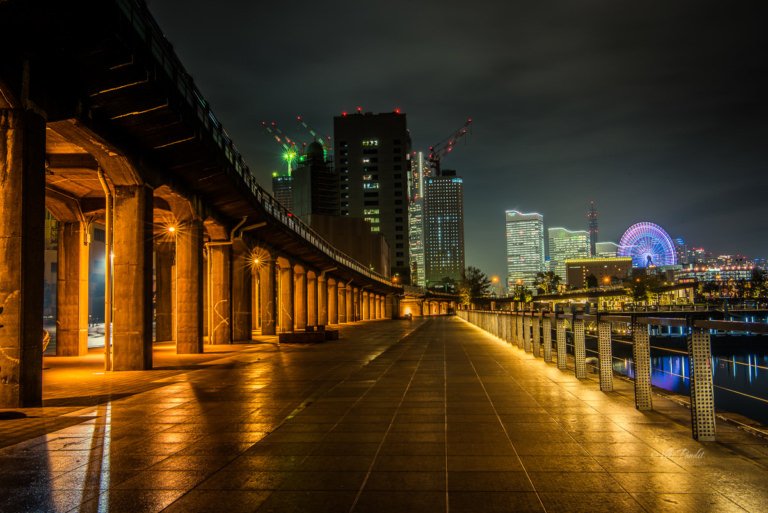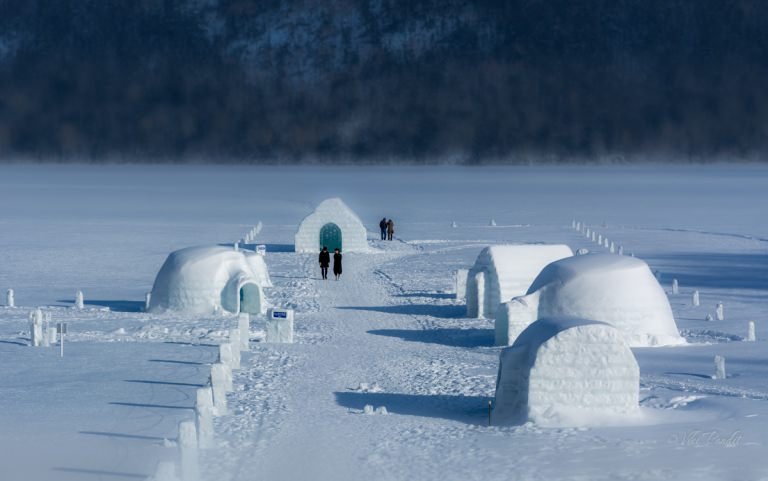After witnessing the exhilarating warrior floats of Aomori Nebuta Museum, I began my journey towards Yamadera. The Hayabusa Shinkansen brought me to Sendai and from there I switched to the local train to Yamadera. Yamadera Station is about a 40-minute train ride from Sendai, Tohoku’s most happening city. The local train to Yamadera goes very slowly through the beautiful and thrilling mountainous territory. Many self-mummified monks trained among these mountains of Haguro, Gassan and Yudono. Their bodies still lie at these sacred sites, the locations of which are closely guarded by the locals.
The train dropped me off at the Yamadera station at about 1 pm. From the small station, I walked straight towards the location of the temple entrance, across a small bridge, painted in traditional bright red, over the Tachiyagawa river.
Multiple road signs on the street guided me towards the entrance of the temple grounds at the base of the mountain. I was on the clock and upon knowing I would have to climb 1,015 steps to reach the summit of Risshaku-ji Temple, I was a bit circumspect if I would be able to make it back in time to catch the next train to Yamagata. Trains are far apart scheduled at intervals of an hour. So it is important to plan your ascent and descent so you don’t have to wait for an extra hour for the train to come along.
The street in front of narrow temple entrance is lined with restaurants serving local delicacies. You can also find some souvenir shops in the vicinity. The area is named after the common name of the temple of Risshaku-ji (立石寺), founded in 860 AD by the priest Ennin, who is better known in Japan by his posthumous name, Jikaku Daishi. Though the temple’s official name is Risshaku-ji, locals refer to it simply as Yamadera – which means “mountain temple.”
From the narrow entrance path I turned left towards the Sanmon, entrance gate. Along the way I passed a lovely statue of the respected poet Matsuo Bashou.
Just beyond the statue of Matsuo Bashou on the right lies the Nenbutsudo temple with a bell tower beside it.
The History of Yamadera
I bought my tickets for ¥300 at the Sanmon (山門), entrance gate and started my ascent.
The Buddhist temple better known as Yamadera, was founded in the 9th century by the Tendai school by the Buddhist teacher Ennin. The temple complex was founded to oversee and assist in the growth of Tendai Buddhism sect in the northern Tohoku region. The temple enshrines Yakushi Nyorai – the Buddha of healing and medicine. From the entrance, along the trail there are more than 30 small sacred structures. Legend has it that climbing the long road and paying homage at the temples will break your bad luck. I also noticed a few teenage visitors hopping on one leg, making their way up to the temple. I am not sure but maybe its a local practice.
After several centuries of prosperity, the temple was partially destroyed in early 16th century during the chaotic Sengoku era. It was later rebuilt in AD 1543 under the monk Enkai. For over a hundred years, its popularity was gradually lost but it shot back to fame in 1689, when Matsuo Bashou, the famous haiku master, stayed in this remote place enchanted by its natural beauty. A place that inspired him to write his famous haiku “Ah this silence / sinking into the rocks / voice of cicada”. It describes how moved he was by hearing only the sound of a cicada echoing across the silent wood. A number of stone monuments bearing Basho’s words line the mountain path.
Just like on my hikes to Wakakusayama and other places, the descending hikers offered nods of encouragement to us, making their way up, with a smiling “konnichiwa” as they passed.
As I climbed the small steps higher and higher I found many small shrines, stone statues and carvings.
The religious complex is composed of about thirty structures. One of the most important cultural asset is the Heian period seated wooden image of Yakushi Nyorai (the Buddha Bhaisajyaguru). Apart from it, Yamadera holds many other important cultural assets in its treasure-house, the Hihokan, including standing wooden idols of Shaka Nyorai, Yakushi Nyorai and Amida Nyorai, a seated wooden idol of Dengyo Daishi, a hanging wooden mandala of Buddha, and a stone monument of the Nyohō-kyō Sutra from 1144 AD. The Konpon-chudo Hall is said to house a Buddhist flame that’s been burning continuously for more than 1,000 years.
The ascent is easily accessible and I had no problems whatsoever tackling it. The stone trail consists of massive moss-covered boulders on either side. Among the luxuriant pines and cypresses trees, if one is lucky they can hear the cicadas chirping away happily.
On the way I paused for a while near the Midahora (弥陀洞), the cave of Amitabha, embedded with thousands of one-yen coins. I am not sure about its significance, but I assume it’s some kind of wishing thing, similar to wishing wells in Europe.
From the Midahora, I picked up my pace as I was almost near the top. In a few minutes I was at the Niomon Gate. The Niomon gate contains many stickers with names of people who have walked these steps.
Just after the Niomon Gate very close to the peak lies three other buildings: the Daibutsuden, Okunoin and Kaizando temples. Okunoin is the main temple hall but not the biggest draw of this place. Interestingly it is the small red building Nokyodo that attracts the most attention of the tourists including me. Indeed, Yamadera is best known for its impressive view of the Nokyodo over the valley.
Nokyodo of Yamadera
Before I even reached Okunoin hall, I was near the most photographed structure at Yamadera: the small red Nokyodo building. The Nokyodo is perfectly positioned to appear on the pictures of this splendid landscape.
A nearby path takes visitors to the wooden observation platform, Godaido, which gives incredible views of the surrounding Yamagata countryside. The Godaido Observatory is definitely the best place to enjoy the beauty of the wide landscape. I didn’t have much time left for the next scheduled train, so I skipped the main hall, I started on my descent.
Yamadera is a good half-day stroll. The ascension is not difficult, and I was able to make my way to the base pretty quickly. On the way back to station I took a left from the Sanmon entrance gate that led me towards the Bakuman exit.
The place must look truly amazing during koyo in autumn when the leaves change colors to a brilliant red, but it’s not so bad during summers either.
The biggest downside of this place, in my opinion is that there is only one train per hour, whether you come from Sendai or Yamagata. So your visit must be synchronized perfectly with the railway timetable if you do not want to wait for long at the station. I thoroughly enjoyed the trip, specially the view from the summit, which was magnificent. The mountain hides withing itself many sacred shrines for the pilgrims, and an equally picturesque temples clinging to the steep rocky hillsides for the camera clicking tourists. The thousand step climb through the dense cedar trees is absolutely worth it, once you reach the top and the view the valley from there.
I grabbed a drink from the vending machine at the station. The hike in the dry weather had sapped me out. I sat for a few minutes before the train to Yamagata arrived and I was on my way.
Please leave a comment if you like my story or continue with me as I visit Tsuruoka to witness the mummified remains of Tetsuryou-kai.
Disclaimer: The information presented in this article is based on the time I visited the premises. Note that there might be changes in the prices of merchandise and admission fees that might have occurred after this article was published. At times the facility might also be closed for repairs or for variety of other reasons. Kindly contact the facility or facilities mentioned in this article directly before visiting.
Usage of this site indicates acceptance of my Terms and Conditions.
Credits: The historical information presented herein is gathered mostly from local guides that were re-inforced via historical writings.
